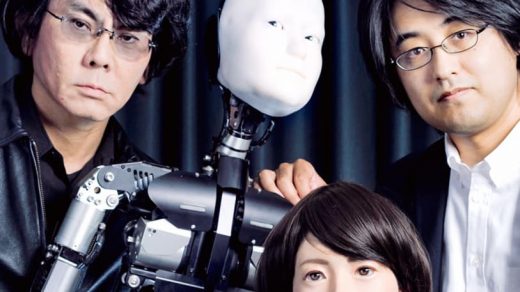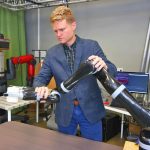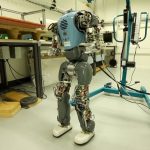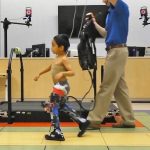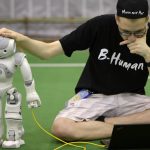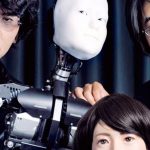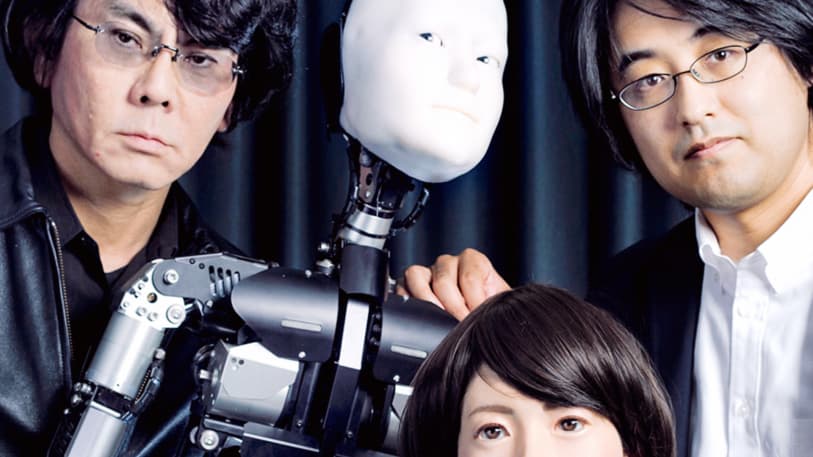How This Japanese Robotics Master Is Building Better, More Human Androids
I’m sitting in the Japan Factory pavilion at SXSW in Austin, Texas, talking to two other attendees about whether human beings are more valuable than robots. I say that I believe human life to be uniquely precious, whereupon one of the others rebuts me by stating that humans allow cars to exist even though they kill humans.
It’s a reasonable point. But my fellow conventioneer has a bias: It’s a robot itself, with an ivory-colored, mask-like face and visible innards. So is the third participant in the conversation, a much more human automaton modeled on a Japanese woman and wearing a black-and-white blouse and a blue scarf.
We’re chatting as part of a demo of technologies developed by the robotics lab of Hiroshi Ishiguro, based at Osaka University, and Japanese telecommunications company NTT. Ishiguro has gained fame in the field by creating increasingly humanlike robots—that is, androids—with the ultimate goal of eliminating the uncanny valley that exists between people and robotic people.
I also caught up with Ishiguro himself at the conference—his second SXSW—to talk about his work. He’s a champion of the notion that people will respond best to robots who simulate humanity, thereby creating “a feeling of presence,” as he describes it. That gives him and his researchers a challenge that encompasses everything from technology to psychology. “Our approach is quite interdisciplinary,” he says, which is what prompted him to bring his work to SXSW.
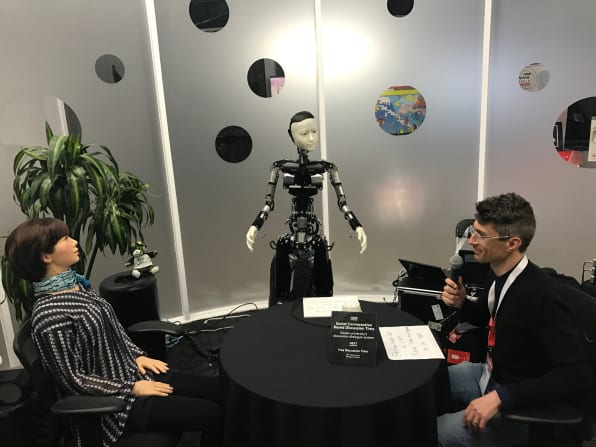
On the tech side, making a robot look and behave like a person involves everything from electronics to the silicone Ishiguro’s team uses to simulate skin. “We have a technology to precisely control pneumatic actuators,” he says, noting, as an example of what they need to re-create, that “the human shoulder has four degrees of freedom.”
Ishiguro sees applications for his imitation people everywhere–he gave the receptionist job at his robotics lab to one and, he says, 80% of visitors mistook it for a human. “In the near future, we’re planning to have a TV program with an android newscaster,” he says. “They have to work weekdays, weekends, at midnight.”
To some Western eyes, Ishiguro’s efforts to make machines look and act like humans come off as creepy, in part because his current creations, for all he’s achieved, still look and sound, well, robotic. He doesn’t dispute that the idea has particular appeal in Japan, and says that he believes that it stems from the fact that it’s a homogeneous society. “We’re a small island, he told me. “We’re quite isolated from other countries. Cats and dogs, maybe the Roomba, everything’s a family member. I call this the island hypothesis.”
Ishiguro adds that people with dementia and autism–two constituencies who might benefit from interactions with robots in some contexts–don’t react well to ones that mimic humanity too closely. “They like to have a more simplified robot,” he says.
Bots That Chat
Earlier in his research, Ishiguro’s robots were, essentially, sophisticated remote-control ventriloquism dummies–he built a duplicate of himself that he could send on the road to deliver speeches, where it replicated what he said and did back home in real time. Now his creations have gained enough autonomy to engage in dialogues without a human at the controls. “NTT has the best technology for voice recognition, speech synthesis, and chatbots,” he says, explaining his team’s collaboration with its researchers.
For now, the results remain stilted: The charm of my chatter with the two robots at SXSW came as much from the fact they were obviously mechanical as their human qualities. But as conversational AI gets more sophisticated, it’s not hard to imagine future Ishiguro creations conversing in a more fluid fashion.
As I took notes on my iPad, I ended my time with Ishiguro by asking him about robots that are anthropomorphic without attempting to precisely mimic humanity, such as SoftBank’s adorable Pepper. “Pepper is also important,” he said. “We need to have personal robots—just as you are using a personal computer—that are very cheap and reliable. Pepper is kind of a normal car. An Android is kind of a Ferrari.”
Fast Company , Read Full Story
(86)

